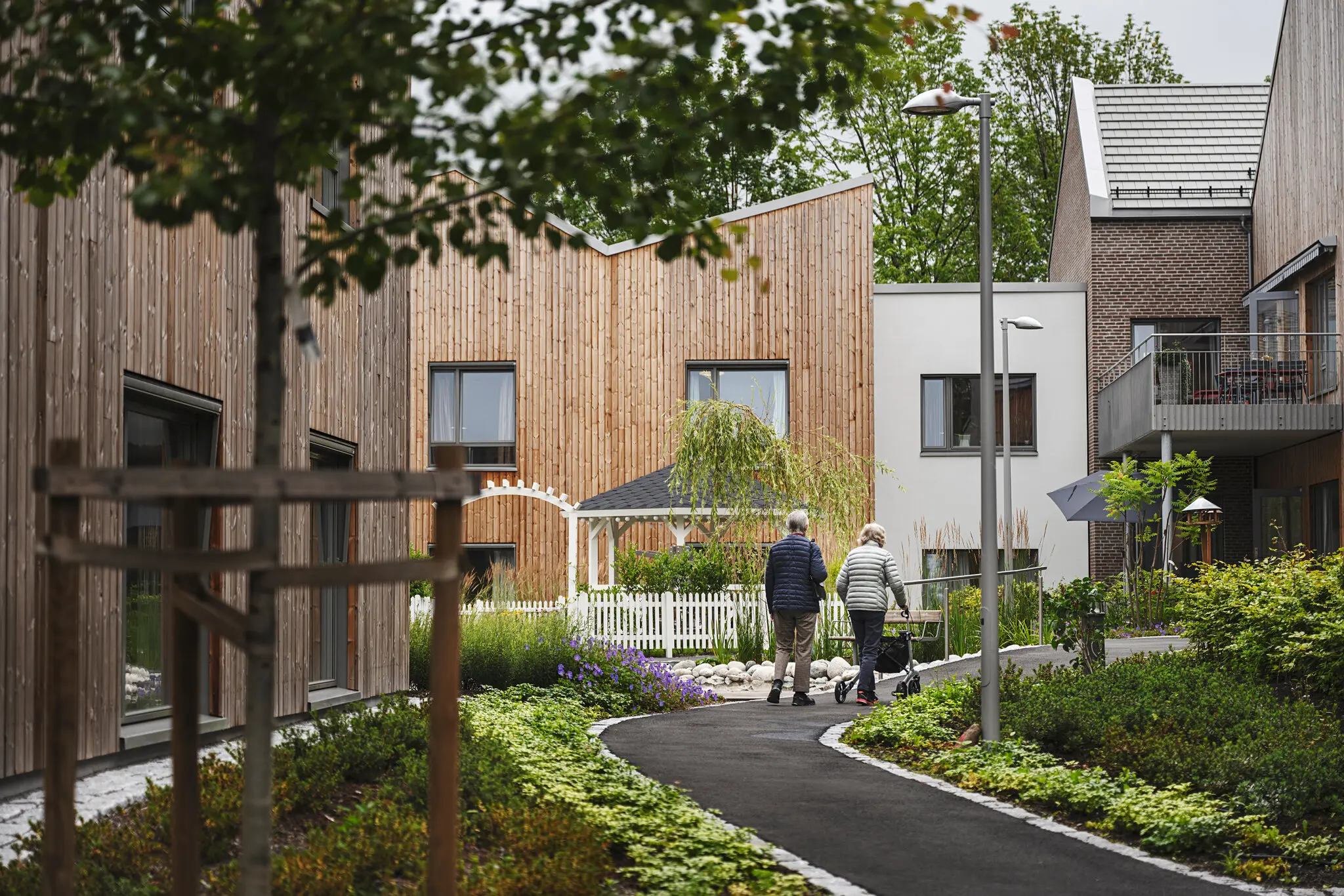Dementia Villages – a creative approach
Photo credit NYT
An estimated 7 million Americans are presently living with Alzheimer’s, and health experts are seeing rising trends in the number of Americans developing the disease. There are fears that in the not-so-distant future we may not have enough caregivers or residences to support all the people who will be living with the disease.
While these are incredibly alarming developments, we have seen one positive change in the fifteen years we have been in business. Namely, there have been great innovations and developments in the types of housing and care available to people suffering from dementia. The traditional model for memory care – a secure floor in a senior residence that resembles a hospital more than a home – seems to be phasing out and being replaced by places designed to meet the unique needs of people living with dementia.
One of the most talked about is Hogeweyk Village, also known as Dementia Village, outside of Amsterdam. Founded in 2009, it truly is a village – with shops, restaurants, and gardens. There are 23 apartments in the Village and each one is home for 6 to 8 people. Everyone who lives in the Village has dementia, and the only other people who visit the village regularly are the caregivers and families of the residents. The caregivers wear regular clothes and act like they are fellow village dwellers, when in fact they are taking care of all the residents.
Residents can walk anywhere they want, within the safety of the Village. Residents are free to visit a park, stroll through a shop, or sit at a restaurant. They can, essentially, keep doing the activities they have done all their lives, and they can do it all on their own schedule.
The basic premise behind the Village is to normalize life with dementia – to allow residents to believe they are living the same kind of life they have always lived. In contrast, most traditional dementia residences feel like a hospital or nursing home, where there is a clear distinction between the patient and the caretakers. In Dementia Village, residents operate on their own time; in Memory Care, residents must abide by the schedule arranged by the staff.
In the suburbs of Oslo, Norway, the Carpe Diem Dementia Village that opened in 2020 follows a similar model to Hogeweyk Village. The key difference is that Cape Diem is open to non-residents. People without dementia are welcome to enter Carpe Dien Village to visit the restaurants and bars, shop, and have their hair cut at the salon. The thinking behind this structure is to further normalize dementia and to destigmatize the disease.
NewDirection Care at Bellmere, in Australia, functions as a small town. Residents live in townhomes, with 6 or 7 people living in each one. NewDirection is also an open community that invites people not living with dementia to shop and eat in the community.
As of yet, there is nothing like these dementia villages in the U.S., but there are some communities under development. Avandell in New Jersey will have space for 105 people living with dementia to live in 15 homes, modeled to look like farmhouses.
It will be harder to create this kind of model in the U.S., a private-pay market, than it is in Europe, where care costs are largely government funded. The Villages are more expensive to develop and require more care than traditional memory care residences.
And it will be almost impossible to keep up with demand. As more and more Americans develop dementia, the need for housing will become enormous. The land required by a Village-type community is much larger than for traditional Memory Care.
When someone has advanced dementia, their family typically has two choices: move them into a secure memory care residence or try to keep them at home with home healthcare aides. Both are extremely expensive and neither one is a great option. But we remain hopeful that as we learn more about dementia, we can start to find more creative solutions to supporting people living with the disease.

